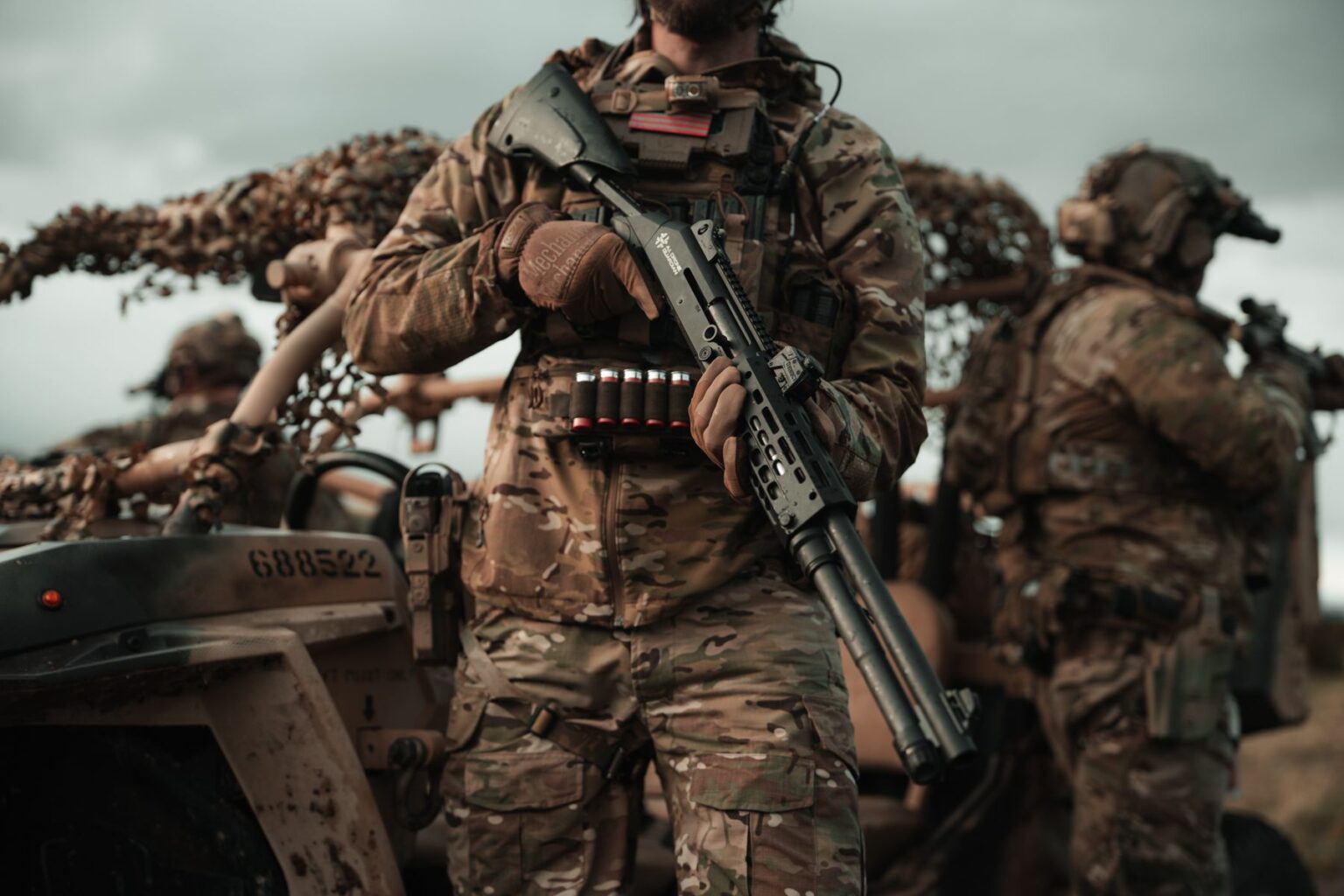
As the war in Ukraine continues into its fourth year, one lesson stands out for militaries worldwide: even the simplest weapons can have a place on the modern battlefield.
Among them is the shotgun — a smoothbore firearm long dismissed as outdated, yet now proving its worth against one of the most difficult threats facing soldiers today: small, fast, and deadly FPV drones.
To better understand how this unexpected shift is shaping European defense thinking, Defence Blog spoke with Marco Angelelli, Shooting Instructor and President of the FITAV Commission for Relations with the Armed Forces. During our conversation, Angelelli shared his views on how Ukraine’s battlefield experience is influencing military doctrine, how European countries are starting to respond, and why a seemingly “archaic” weapon may soon become a crucial part of counter-drone defense strategies.
“Thank you for giving me this opportunity to discuss a topic of extreme relevance for European countries as well,” Angelelli said. “I am convinced that the lessons learned by the Ukrainian army are crucial for European and NATO militaries. Now, after three and a half years of war, we have nothing left to teach their soldiers. In fact, Ukrainian instructors would be welcome; learning from their war experiences is certainly unique these days.”
The Ukrainian Armed Forces have been among the first in the world to incorporate shotguns into organized counter-drone defense. Facing an unprecedented wave of FPV attacks, often launched in swarms and at extremely close range, Ukrainian units have had to improvise. Their solution has been to adapt old tools to new threats.
The 413th Separate Raid Battalion of the Unmanned Aerial Systems Forces has even established a dedicated training program for shooting down drones with shotguns. According to Ukrainian military officials, nearly 400 service members have completed the course in just seven months — a sign of how urgently frontline troops are seeking practical solutions.
The logic is simple: a shotgun’s spread pattern increases the chances of hitting a small, fast-moving drone, particularly in the final seconds before impact. For soldiers defending trenches, vehicles, or command posts, it is often the last line of defense when electronic jamming and other countermeasures fail.
The lessons from Ukraine are not going unnoticed in Europe. Armed forces across the continent are beginning to experiment with similar approaches — and Italy is among the first to move beyond theory and into practice.
“The Italian Armed Forces are receiving the first Benelli M4 AI Drone Guards,” Angelelli explained. “As President of the FITAV Commission for Relations with the Armed Forces, we are proposing training protocols for military personnel and law enforcement. We have also established a C-UAS/FPV drone training school with shotguns at the ‘La Torre’ high-speed rail station in Pisa, Tuscany. As for other European armed forces, they too are equipping themselves with Benelli shotguns, and the Italian company, in addition to supplying shotguns, also offers training packages for counter-drone operators.”
These initiatives reflect a growing recognition that counter-drone defense cannot rely on a single system. Instead, experts advocate for a layered approach — a combination of early warning sensors, jammers, directed-energy systems, and kinetic weapons. Within that layered defense, the shotgun is emerging as an inexpensive and accessible option, especially for last-resort engagements.
The question now facing European militaries is whether such training programs should become standard practice — and whether shotguns themselves should be formally integrated into counter-drone doctrine. Angelelli believes the answer is yes, but with a caveat.
“Shotguns are certainly not the solution to countering FPV drones,” he said. “But when integrated into a multi-layered defense system consisting of RF detectors, drone detectors, jammers, and hard kills, they are an effective response, especially as a last resort for soldiers to defend their own lives, those of their comrades, or military vehicles and installations. All of this requires very thorough training given the unique nature of the shooting. The example of the Ukrainian training center is certainly worth following, and it would be desirable for NATO forces to adopt one as well.”
Skeptics argue that shotguns are too primitive to counter modern drone threats. But the reality of the battlefield suggests otherwise. FPV drones — small, fast, and deadly — have become the single most dangerous weapon on the front lines of Ukraine. Their proliferation has changed the calculus of infantry warfare.
“Currently, the main threat for soldiers is attacks from FPV drones; in the Ukrainian conflict, 80% of military casualties were due to these types of attacks,” Angelelli noted. “Therefore, soldiers must have two weapons at their disposal: a primary anti-drone weapon (shotgun) and a secondary anti-personnel weapon. Individually, it is essential to equip soldiers with drone detector systems and thermal night vision. So, a newly developed shotgun like the Benelli M4 AI Drone Guardian, part of an integrated individual system, is certainly a modern system with immediate application for C-UAS/FPV drones.”
The key, he argued, is not to view shotguns as relics of a bygone era but as adaptable tools. Their affordability, ease of use, and effectiveness in close-range engagements make them an ideal complement to more sophisticated systems.
As Europe’s militaries prepare for the future, they face a fundamental shift in how wars are fought. Drones — once niche tools for reconnaissance — are now central to offensive operations. Their speed, precision, and low cost make them difficult to defend against, especially in large numbers.
The lessons from Ukraine are clear: the solution is not one technology but a layered system that combines multiple approaches. Shotguns, though simple, have a place in that system — not as a silver bullet, but as a vital last line of defense.
The Italian example, along with Ukraine’s battlefield innovation, suggests that more European armies will follow. If they do, the humble shotgun — a weapon once considered obsolete — may become one of the most practical tools on tomorrow’s battlefield.